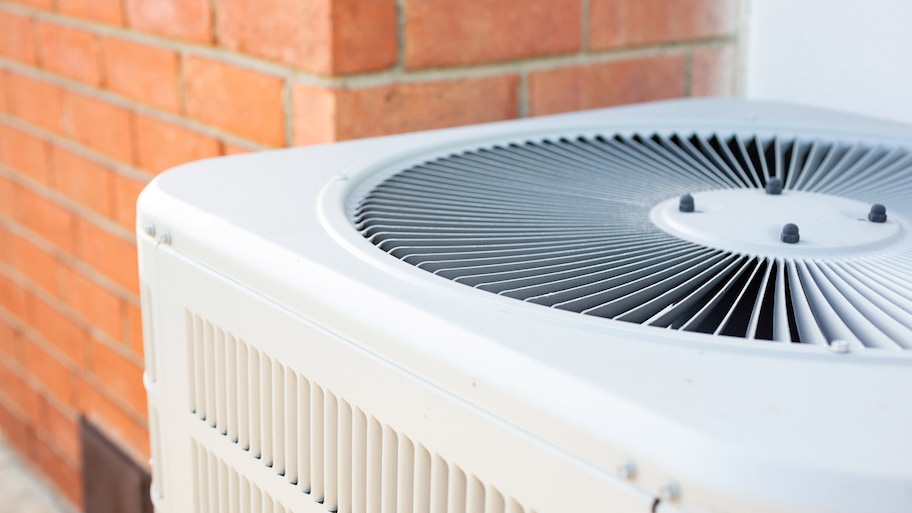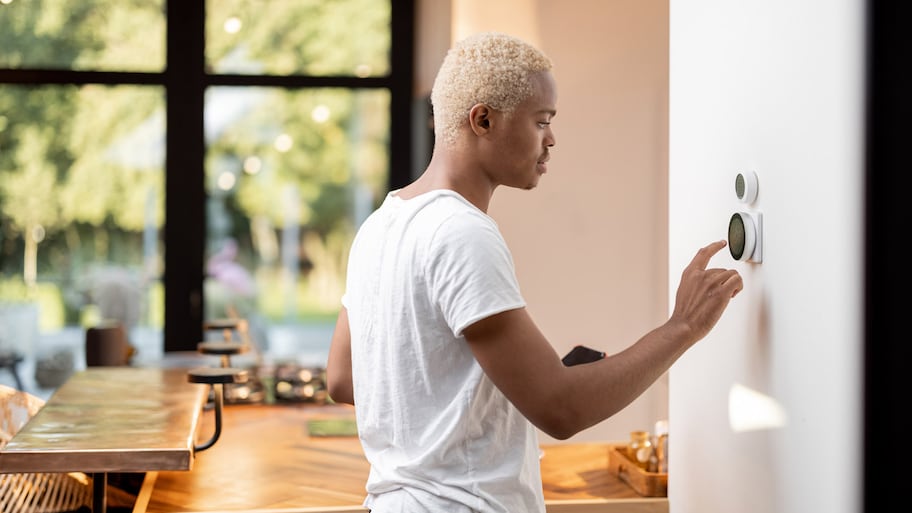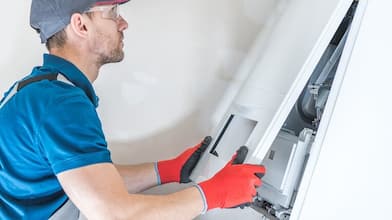Highlights
Many HVAC problems are DIY-friendly, saving you a service call.
Try replacing the thermostat’s batteries and performing minor troubleshooting.
If your system won’t power on at all, look for the fuse box or circuit breaker box.
Replace a fuse or turn on the circuit if necessary.
Your HVAC system keeps you toasty during the winter months and cooled down during the summer months, in addition to filtering your air and maintaining proper humidity levels. In other words, this complicated, yet necessary system, often falls victim to a spate of repair-related issues.
Some of these problems require a local HVAC contractor to clear up, but others are DIY-friendly. Here are some common HVAC problems and solutions.
1. Malfunctioning Thermostat
Your thermostat doesn’t just relay information to you and your family; it does the same to the rest of your HVAC system. There are plenty of different types of thermostats out there and they each interact with the rest of your system in unique ways.
If something goes wrong with the thermostat or any associated remote control units, it impacts the rest of the system. When your air conditioner or heater begins acting up, check on the thermostat before anything else, as the fixes for this common problem are simple and inexpensive.
Solution
Many thermostats run on batteries, so start by swapping those batteries out with new ones.
If the batteries are dead, the thermostat can’t relay any information back to the system, such as temperature changes.
Is your heat running during the summer or AC during the winter? Perhaps you programmed the thermostat incorrectly.
Check on your thermostat’s settings and bone up on the manual to ensure your system is receiving accurate and up-to-date information.
Perform a quick calibration test. Set the thermostat to 10 degrees warmer or cooler than current temperatures.
One hour later, use another temperature gauge to test the air coming from your vents. If the thermostat and secondary temperature gauge match, your thermostat is likely calibrated correctly.
If not, check your thermostat’s instructions for calibration steps.
Gently clean the interior of the thermostat with soft brushes and cloths. Dirty sensors translate to incorrect data sent to the HVAC system.
2. Reduced Efficiency

Is your air conditioner or heater struggling to keep up with extreme weather or even day-to-day needs? Your HVAC system has lost some of its efficiency. An inefficient HVAC system not only decreases the comfort level of your home but also leads to an increase in energy consumption and utility bills.
There are a number of possible reasons why your system is not as spry as it used to be, so prepare for some troubleshooting.
Solution
Your first stop? The air filters. Change out or clean each and every filter affiliated with your system according to instructions.
Dirty filters prevent the usual flow of air, so swap them out every two or three months.
Blockages are also a common culprit here. Go outside to your central unit and remove any debris.
Do the same for your vents, ducts, and grills.
Dirty ducts and related components also lead to a decrease in overall efficiency.
Properly cleaning these areas, however, require specialized tools. Contact a local duct cleaning company and set up a consultation.
3. Tripped Circuit Breaker or Blown Fuse
If the heater or air conditioner refuses to power on or works with a limited capacity, don’t choose a new HVAC system just yet. A tripped circuit breaker or a blown fuse both cause major issues within your system, and these issues are relatively simple to troubleshoot and repair.
Solution
An overloaded circuit breaker automatically turns off and a blown fuse stops delivering power.
Look for a metal box flush with the wall, typically located in the garage, a utility closet, a basement, or another out-of-the-way location.
Open the door. If you see a row of switches, you have a circuit breaker box.
If you see a group of round objects screwed into sockets like light bulbs, you have a fuse box.
Identify which fuse or circuit powers your HVAC system. Blown fuses are cloudy with a broken metal line in the interior. A tripped circuit breaker switches to the off position.
Replace the fuse with a similar amp-rated model or switch the circuit breaker to the on position.
4. Water Leaks

HVAC systems create plenty of moisture as a side effect of use. Air conditioners produce condensate, which pushes through drain pipes and, ultimately, away from your home. If the drain system clogs up or becomes damaged, your system will leak. The heat exchanger, evaporator drain, and collector box are all potential leak sources.
If you’re experiencing this common HVAC problem, try to handle it as soon as possible, as unregulated water buildup leads to mold, structural damage, and electrical damage.
Solution
Clogged drain pipes are a simple fix. Just pour one to two cups of bleach or vinegar down the pipes every few months.
If your drain pan is constantly overflowing, use a wet vac to suck up standing water and inspect it for cracks or holes.
Apply a water sealant solution for smaller cracks and replace the pan if the sealant doesn’t work.
Dirty air filters also cause leaking, as they force the buildup of coolant. Replace your air filters every two to three months.
If none of this helps, call in a pro to check for pipe cracks, low refrigerant, and broken condensate pumps.
5. Uneven Temperature Distribution
When your HVAC system sends out cool or hot air to different rooms at different rates, it results in uneven temperature distribution. Many factors determine which parts of your home receive HVAC system priority, such as the room size, the location of air vents, the windows, and even the outside temperature.
Luckily, there are some easy fixes for this common HVAC problem that’ll even out the temperature levels in your space.
Solution
The likely culprit here is poor insulation in certain parts of your home.
First, cover up big windows with sun-blocking drapes or blinds. Check on the window liners and replace if necessary.
Beef up insulation throughout the house via your preferred materials. As always, clean or replace the air filters.
Install some dampers in your HVAC system, otherwise known as duct dampers or volume balancing dampers. These movable plates go in the ductwork and regulate the flow of air.
Look into a zoned HVAC system. An HVAC zoning system activates your air conditioner or heater based on the most-used parts of your home.
Make sure to cover big windows with sun-blocking drapes or blinds. You should inspect each room's insulation. Also, add dampers to regulate your HVAC system. This will move the air to make every room equal in temperature.





